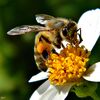Abstract
ABCG2 is an ATP-binding cassette (ABC) transporter that extrudes a wide range of xenobiotics and drugs from the cell and contributes to multidrug resistance in cancer cells. Following our recent structural characterization of topotecan-bound ABCG2, here, we present cryo-EM structures of ABCG2 under turnover conditions in complex with a special modulator and slow substrate, tariquidar,...
- Abstract Gram-negative bacteria pose a serious public health concern due to resistance to many antibiotics, caused by the low permeability of their outer membrane (OM). Effective antibiotics use porins in the OM to reach the interior of the cell; thus, understanding permeation properties of OM porins is instrumental to rationally develop broad-spectrum antibiotics. A functionally important...
- Abstract Ligand-independent activation of receptor tyrosine kinases (RTKs) allows for dissecting out the receptor-specific signaling outcomes from the pleiotropic effects of the ligands. In this regard, RTK intracellular domains (ICD) are of interest due to their ability to recapitulate signaling activity in a ligand-independent manner when fused to chemical or optical dimerizing domains. A...
- Abstract Neuroregeneration is a dynamic process synergizing the functional outcomes of multiple signaling circuits. Channelrhodopsin-based optogenetics shows the feasibility of stimulating neural repair but does not pin down specific signaling cascades. Here, we utilized optogenetic systems, optoRaf and optoAKT, to delineate the contribution of the ERK and AKT signaling pathways to...
- Abstract Optogenetics uses light-inducible protein-protein interactions to precisely control the timing, localization, and intensity of signaling activity. The precise spatial and temporal resolution of this emerging technology has proven extremely attractive to the study of embryonic development, a program faithfully replicated to form the same organism from a single cell. We have previously...
- Abstract Mitochondria are highly dynamic organelles whose fragmentation by fission is critical to their functional integrity and cellular homeostasis. Here, we develop a method via optogenetic control of mitochondria-lysosome contacts (MLCs) to induce mitochondrial fission with spatiotemporal accuracy. MLCs can be achieved by blue-light-induced association of mitochondria and lysosomes through...
- Abstract Background: Opsin-based optogenetics has emerged as a powerful biomedical tool using light to control protein conformation. Such capacity has been initially demonstrated to control ion flow across the cell membrane, enabling precise control of action potential in excitable cells such as neurons or muscle cells. Further advancement in optogenetics incorporates a...
- Individual differences in honey bee behavior enabled by plasticity in brain gene regulatory networksAbstract Understanding the regulatory architecture of phenotypic variation is a fundamental goal in biology, but connections between gene regulatory network (GRN) activity and individual differences in behavior are poorly understood. We characterized the molecular basis of behavioral plasticity in queenless honey bee (Apis mellifera) colonies, where individuals engage in both...
- Abstract Understanding how genotypic variation results in phenotypic variation is especially difficult for collective behaviour because group phenotypes arise from complex interactions among group members. A genome-wide association study identified hundreds of genes associated with colony-level variation in honeybee aggression, many of which also showed strong signals of positive selection, but...
- Context-dependent influence of threat on honey bee social network dynamics and brain gene expressionAbstract Adverse social experience affects social structure by modifying the behavior of individuals, but the relationship between an individual's behavioral state and its response to adversity is poorly understood. We leveraged naturally occurring division of labor in honey bees and studied the biological embedding of environmental threat using laboratory assays and automated behavioral...









